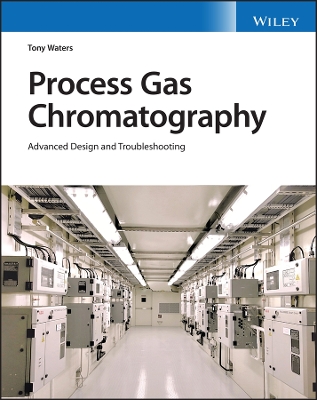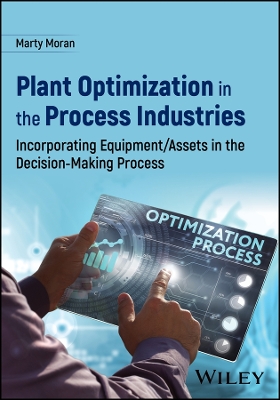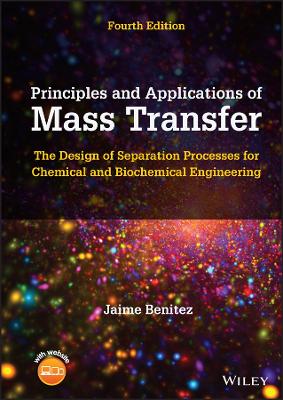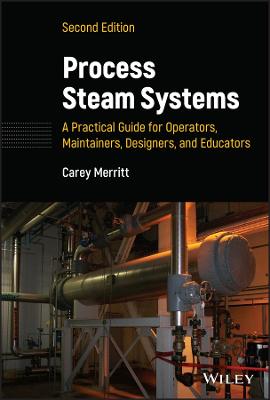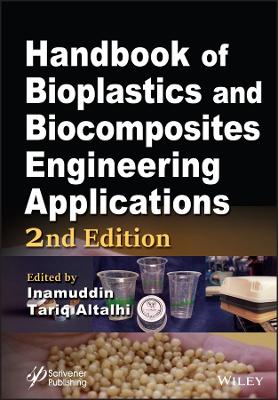Nucleation and Crystal Growth
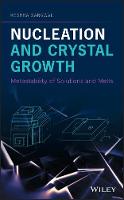 -15%
portes grátis
-15%
portes grátis
Nucleation and Crystal Growth
Metastability of Solutions and Melts
Sangwal, Keshra
John Wiley & Sons Inc
11/2018
512
Dura
Inglês
9781119461579
15 a 20 dias
932
Descrição não disponível.
Preface xiii
Acknowledgments xix
List of Frequently Used Symbols xxi
1 Structure and Properties of Liquids 1
1.1 Different States of Matter 1
1.2 Models of Liquid Structure 6
1.3 Water and Other Common Solvents 12
1.4 Properties of Solutions 15
1.4.1 The Solvation Process 17
1.4.2 The Concentration of Solutions 19
1.4.3 Density and Thermal Expansivity of Solutions 21
1.4.4 Viscosity of Solutions 27
1.5 Saturated Solutions 35
1.6 High-Temperature Solvents and Solutions 43
References 46
2 Three-dimensional Nucleation of Crystals and Solute Solubility 49
2.1 Driving Force for Phase Transition 49
2.2 3D Nucleation of Crystals 54
2.2.1 Nucleation Barrier 55
2.2.2 Nucleation Rate 56
2.2.3 3D Heterogeneous Nucleation 60
2.3 Ideal and Real Solubility 63
2.3.1 Basic Concepts 63
2.3.2 Examples of Experimental Data 68
2.3.3 Mathematical Representation of Solute Solubility in Solvent Mixtures 76
2.4 Solute Solubility as a Function of Solvent-Mixture Composition 78
2.4.1 A Simple Practical Approach 78
2.4.2 Physical Interpretation of the ? Factor and Solvent Activity 87
2.4.3 Preferential Solvation of Solute by Solvents 89
2.5 Solid-Solvent Interfacial Energy 92
2.6 Solubility and Supersolubility 96
References 101
3 Kinetics and Mechanism of Crystallization 105
3.1 Crystal Growth as a Kinetic Process 106
3.2 Types of Crystal-Medium Interfaces 107
3.3 Thermodynamic and Kinetic Roughening of Surfaces 108
3.4 Growth Kinetics of Rough Faces 111
3.5 Growth Kinetics of Perfect Smooth Faces 112
3.6 Growth Kinetics of Imperfect Smooth Faces 116
3.6.1 Surface Diffusion and Direct Integration Models 117
3.6.2 Bulk Diffusion Models 119
3.6.3 Growth at Edge Dislocations 120
3.7 Simultaneous Bulk-Diffusion and Surface-Reaction Controlled Growth 121
3.8 Effect of Impurities on Growth Kinetics 123
3.9 Overall Crystallization 127
3.9.1 Basic Theoretical Equations 129
3.9.2 Polynuclear Crystallization 133
3.9.2.1 Instantaneous Nucleation Mode 134
3.9.2.2 Progressive Nucleation Mode 135
3.9.2.3 Trends of Overall Crystallization Curves 136
3.9.2.4 Some Comments on the KJMA Theory 138
3.9.3 Mononuclear Crystallization 139
3.9.4 Effect of Additives on Overall Crystallization 139
References 140
4 Phase Transformation and Isothermal Crystallization Kinetics 145
4.1 Nucleation and Transformation of Metastable Phases 146
4.1.1 Thermodynamics of Crystallization of Metastable Phases 147
4.1.2 Transformation Kinetics of Metastable Phases 151
4.1.3 Transformation of Metastable Phases According to KJMA Theory 158
4.1.4 Effect of Solvent on Transformation of Metastable Phases 160
4.2 Some Non-KJMAModels of Isothermal Crystallization Kinetics 170
4.2.1 Approach Involving Formation of an Amorphous Precursor 170
4.2.2 Model of Mazzanti, Marangoni, and Idziak 175
4.2.3 Gompertz's Model 178
4.2.4 Model of Foubert, Dewettinck, Jansen, and Vanrolleghem 179
4.3 Comparison of Different Models of Isothermal Crystallization Kinetics 181
References 186
5 Nonisothermal Crystallization Kinetics and the Metastable Zone Width 189
5.1 Theoretical Interpretations of MSZW 191
5.1.1 Nyvlt's Approach 192
5.1.2 Kubota's Approach 194
5.1.3 Self-Consistent Nyvlt-Like Equation of MSZW 195
5.1.4 Approach Based on the Classical Theory of 3D Nucleation 197
5.1.5 Approach Based on Progressive 3D Nucleation 199
5.1.6 Approach Based on Instantaneous 3D Nucleation 202
5.2 Experimental Results on MSZW of Solute?Solvent Systems 202
5.2.1 Dependence of Dimensionless Supercooling on Cooling Rate 204
5.2.2 Effect of Detection Technique on MSZW 210
5.2.3 Relationships between ? and Z and between ? and F 212
5.2.4 Relationship between Dimensionless F1 and Crystallization Temperature 220
5.2.5 Dependence of Parameters ? and F on Saturation Temperature T9 222
5.2.6 Physical Significance of Esat and Its Relationship with ?Hs 225
5.2.7 The Nucleation Order m 230
5.3 Isothermal Crystallization 232
5.4 Effect of Additives on MSZW of Solutions 232
5.4.1 Some General Features 233
5.4.2 Theoretical Considerations 236
5.4.2.1 Approach Based on Classical Nucleation Theory 236
5.4.2.2 Final Expressions for Analysis of Experimental Data 238
5.4.3 Some Examples of Effect of Impurities on MSZW 239
5.4.3.1 Boric Acid Aqueous Solutions 239
5.4.3.2 KDP Aqueous Solutions 244
5.4.3.3 POP-Acetone Solutions Containing PPP Additive 246
5.4.4 Dependence of Maximum Supersaturation Ratio on Impurity Concentration 250
5.4.5 Solute-Additive Binding Energies and MSZW of Systems 252
5.5 Effects of Some Other Factors on MSZW of Solutions 255
5.5.1 Effect of Stirring and Ultrasound on MSZW 255
5.5.2 Effect of Solution Volume on MSZW 255
5.6 Nonisothermal Crystallization Kinetics in Melts 259
References 260
6 Antisolvent Crystallization and the Metastable Zone Width 267
6.1 Observation Techniques for Antisolvent Crystallization 268
6.2 Light Intensity Measurements 270
6.2.1 Some Experimental Data 270
6.2.2 Processes Involved in Antisolvent Crystallization 274
6.3 Temperature Measurements 276
6.3.1 Some Experimental Data 276
6.3.2 Kinetics of Temperature Increase 279
6.3.3 Physical Interpretation of Temperature Changes of ADP Solutions with Antisolvent Feeding Time at Different Rates 286
6.3.4 Origin of Two Minima and Maximum in Temperature Change ?T During Antisolvent Crystallization 287
6.3.5 Relationship Between Different Temperature Changes, Antisolvent Feeding Rate, and Antisolvent Content 288
6.3.6 Comparison of Light-intensity and Temperature Measurements 291
6.4 Effect of Antisolvent Composition on Nucleation Rate 296
6.5 Different Approaches of MSZW 298
6.5.1 Modified Nyvlt-like Approach 298
6.5.2 Kubota's Approach 299
6.5.3 Another Derivation of Nyvlt-like Equation 300
6.5.4 Approach Based on Classical Theory of 3D Nucleation 302
6.6 Experimental Data of MSZW in Antisolvent Crystallization 303
6.6.1 Analysis of Experimental ?xmax(RA) Data 304
6.6.2 Effect of Detection Technique on MSZW 312
6.6.3 Effect of Stirring on MSZW 315
6.6.4 Threshold and Limiting Antisolvent Addition Rates 318
6.7 Combined Antisolvent/Cooling Crystallization 319
References 321
7 Induction Period for Crystallization 325
7.1 Theoretical Background 327
7.1.1 Theoretical Interpretation of Induction Period 328
7.1.2 Some Other Relations 331
7.1.3 Basic Equations 333
7.2 Induction Period for Isothermal Crystallization 333
7.2.1 Crystallization from Solutions 333
7.2.2 Crystallization from the Melt 338
7.3 Induction Period in Antisolvent Crystallization 343
7.4 Induction Period for Nonisothermal Crystallization 345
7.4.1 Crystallization from Solutions 345
7.4.2 Effect of Impurities on Crystallization from Solutions 349
7.4.3 Crystallization from the Melt 354
References 358
8 Ostwald Ripening, Crystal Size Distribution, and Polymorph Selection 361
8.1 Supersaturation Decay During Antisolvent Crystallization 362
8.1.1 General Trends 362
8.1.2 Kinetics of Supersaturation Decay 362
8.1.3 Relationship between ConstantK and Antisolvent Feeding Rate RA 367
8.2 Solvation and Desolvation Processes 372
8.2.1 Origin of Minima in ?Tsw(t) Plots 373
8.2.2 Kinetics of Evolution of Minima in ?Tsw(t) Plots 374
8.3 Evolution of Desupersaturation Curves 383
8.4 Crystal Morphology 388
8.5 Growth Rate Dispersion 396
8.6 Ostwald Ripening 398
8.7 Crystal Size Distribution 403
8.8 Control of Phase and Size of Crystallizing Particles 412
References 417
9 Glass Formation and Crystallization Processes 423
9.1 Glass Formation by Cooling of Melts 424
9.2 Temperature Dependence of Viscosity and the Glass Transition Temperature 426
9.3 Composition Dependence of Glass Transition Temperature 431
9.4 Relationship between Glass Transition Temperature and Metastable Zone Width of Solutions 435
9.5 Metastable Zone Width of Melts and Glass Formation 438
9.5.1 Derivation of Basic Equations 438
9.5.2 Effect of Melt Viscosity and Additives on Z and F Parameters 441
9.5.3 Calculations of RLlim, Z, F, and TN for Molten Elements and Electrolytes 444
9.5.4 Relationship between Tg and Tm for Various Substances 446
9.5.5 Comparison of Cooling Behavior of Melts and Electrolyte Solutions 449
References 451
Appendix A Volumetric Thermal Expansion Coefficient of Melts 453
References 455
Appendix B Relationship between ?V and Other Physical Properties 457
B.1 Molten Elements 457
B.2 Molten Halite-Type Electrolytes 457
Reference 461
Appendix C Relationship between Densities dm of Molten Metals and Electrolytes and Atomic Mass M 463
Reference 464
Index 465
Acknowledgments xix
List of Frequently Used Symbols xxi
1 Structure and Properties of Liquids 1
1.1 Different States of Matter 1
1.2 Models of Liquid Structure 6
1.3 Water and Other Common Solvents 12
1.4 Properties of Solutions 15
1.4.1 The Solvation Process 17
1.4.2 The Concentration of Solutions 19
1.4.3 Density and Thermal Expansivity of Solutions 21
1.4.4 Viscosity of Solutions 27
1.5 Saturated Solutions 35
1.6 High-Temperature Solvents and Solutions 43
References 46
2 Three-dimensional Nucleation of Crystals and Solute Solubility 49
2.1 Driving Force for Phase Transition 49
2.2 3D Nucleation of Crystals 54
2.2.1 Nucleation Barrier 55
2.2.2 Nucleation Rate 56
2.2.3 3D Heterogeneous Nucleation 60
2.3 Ideal and Real Solubility 63
2.3.1 Basic Concepts 63
2.3.2 Examples of Experimental Data 68
2.3.3 Mathematical Representation of Solute Solubility in Solvent Mixtures 76
2.4 Solute Solubility as a Function of Solvent-Mixture Composition 78
2.4.1 A Simple Practical Approach 78
2.4.2 Physical Interpretation of the ? Factor and Solvent Activity 87
2.4.3 Preferential Solvation of Solute by Solvents 89
2.5 Solid-Solvent Interfacial Energy 92
2.6 Solubility and Supersolubility 96
References 101
3 Kinetics and Mechanism of Crystallization 105
3.1 Crystal Growth as a Kinetic Process 106
3.2 Types of Crystal-Medium Interfaces 107
3.3 Thermodynamic and Kinetic Roughening of Surfaces 108
3.4 Growth Kinetics of Rough Faces 111
3.5 Growth Kinetics of Perfect Smooth Faces 112
3.6 Growth Kinetics of Imperfect Smooth Faces 116
3.6.1 Surface Diffusion and Direct Integration Models 117
3.6.2 Bulk Diffusion Models 119
3.6.3 Growth at Edge Dislocations 120
3.7 Simultaneous Bulk-Diffusion and Surface-Reaction Controlled Growth 121
3.8 Effect of Impurities on Growth Kinetics 123
3.9 Overall Crystallization 127
3.9.1 Basic Theoretical Equations 129
3.9.2 Polynuclear Crystallization 133
3.9.2.1 Instantaneous Nucleation Mode 134
3.9.2.2 Progressive Nucleation Mode 135
3.9.2.3 Trends of Overall Crystallization Curves 136
3.9.2.4 Some Comments on the KJMA Theory 138
3.9.3 Mononuclear Crystallization 139
3.9.4 Effect of Additives on Overall Crystallization 139
References 140
4 Phase Transformation and Isothermal Crystallization Kinetics 145
4.1 Nucleation and Transformation of Metastable Phases 146
4.1.1 Thermodynamics of Crystallization of Metastable Phases 147
4.1.2 Transformation Kinetics of Metastable Phases 151
4.1.3 Transformation of Metastable Phases According to KJMA Theory 158
4.1.4 Effect of Solvent on Transformation of Metastable Phases 160
4.2 Some Non-KJMAModels of Isothermal Crystallization Kinetics 170
4.2.1 Approach Involving Formation of an Amorphous Precursor 170
4.2.2 Model of Mazzanti, Marangoni, and Idziak 175
4.2.3 Gompertz's Model 178
4.2.4 Model of Foubert, Dewettinck, Jansen, and Vanrolleghem 179
4.3 Comparison of Different Models of Isothermal Crystallization Kinetics 181
References 186
5 Nonisothermal Crystallization Kinetics and the Metastable Zone Width 189
5.1 Theoretical Interpretations of MSZW 191
5.1.1 Nyvlt's Approach 192
5.1.2 Kubota's Approach 194
5.1.3 Self-Consistent Nyvlt-Like Equation of MSZW 195
5.1.4 Approach Based on the Classical Theory of 3D Nucleation 197
5.1.5 Approach Based on Progressive 3D Nucleation 199
5.1.6 Approach Based on Instantaneous 3D Nucleation 202
5.2 Experimental Results on MSZW of Solute?Solvent Systems 202
5.2.1 Dependence of Dimensionless Supercooling on Cooling Rate 204
5.2.2 Effect of Detection Technique on MSZW 210
5.2.3 Relationships between ? and Z and between ? and F 212
5.2.4 Relationship between Dimensionless F1 and Crystallization Temperature 220
5.2.5 Dependence of Parameters ? and F on Saturation Temperature T9 222
5.2.6 Physical Significance of Esat and Its Relationship with ?Hs 225
5.2.7 The Nucleation Order m 230
5.3 Isothermal Crystallization 232
5.4 Effect of Additives on MSZW of Solutions 232
5.4.1 Some General Features 233
5.4.2 Theoretical Considerations 236
5.4.2.1 Approach Based on Classical Nucleation Theory 236
5.4.2.2 Final Expressions for Analysis of Experimental Data 238
5.4.3 Some Examples of Effect of Impurities on MSZW 239
5.4.3.1 Boric Acid Aqueous Solutions 239
5.4.3.2 KDP Aqueous Solutions 244
5.4.3.3 POP-Acetone Solutions Containing PPP Additive 246
5.4.4 Dependence of Maximum Supersaturation Ratio on Impurity Concentration 250
5.4.5 Solute-Additive Binding Energies and MSZW of Systems 252
5.5 Effects of Some Other Factors on MSZW of Solutions 255
5.5.1 Effect of Stirring and Ultrasound on MSZW 255
5.5.2 Effect of Solution Volume on MSZW 255
5.6 Nonisothermal Crystallization Kinetics in Melts 259
References 260
6 Antisolvent Crystallization and the Metastable Zone Width 267
6.1 Observation Techniques for Antisolvent Crystallization 268
6.2 Light Intensity Measurements 270
6.2.1 Some Experimental Data 270
6.2.2 Processes Involved in Antisolvent Crystallization 274
6.3 Temperature Measurements 276
6.3.1 Some Experimental Data 276
6.3.2 Kinetics of Temperature Increase 279
6.3.3 Physical Interpretation of Temperature Changes of ADP Solutions with Antisolvent Feeding Time at Different Rates 286
6.3.4 Origin of Two Minima and Maximum in Temperature Change ?T During Antisolvent Crystallization 287
6.3.5 Relationship Between Different Temperature Changes, Antisolvent Feeding Rate, and Antisolvent Content 288
6.3.6 Comparison of Light-intensity and Temperature Measurements 291
6.4 Effect of Antisolvent Composition on Nucleation Rate 296
6.5 Different Approaches of MSZW 298
6.5.1 Modified Nyvlt-like Approach 298
6.5.2 Kubota's Approach 299
6.5.3 Another Derivation of Nyvlt-like Equation 300
6.5.4 Approach Based on Classical Theory of 3D Nucleation 302
6.6 Experimental Data of MSZW in Antisolvent Crystallization 303
6.6.1 Analysis of Experimental ?xmax(RA) Data 304
6.6.2 Effect of Detection Technique on MSZW 312
6.6.3 Effect of Stirring on MSZW 315
6.6.4 Threshold and Limiting Antisolvent Addition Rates 318
6.7 Combined Antisolvent/Cooling Crystallization 319
References 321
7 Induction Period for Crystallization 325
7.1 Theoretical Background 327
7.1.1 Theoretical Interpretation of Induction Period 328
7.1.2 Some Other Relations 331
7.1.3 Basic Equations 333
7.2 Induction Period for Isothermal Crystallization 333
7.2.1 Crystallization from Solutions 333
7.2.2 Crystallization from the Melt 338
7.3 Induction Period in Antisolvent Crystallization 343
7.4 Induction Period for Nonisothermal Crystallization 345
7.4.1 Crystallization from Solutions 345
7.4.2 Effect of Impurities on Crystallization from Solutions 349
7.4.3 Crystallization from the Melt 354
References 358
8 Ostwald Ripening, Crystal Size Distribution, and Polymorph Selection 361
8.1 Supersaturation Decay During Antisolvent Crystallization 362
8.1.1 General Trends 362
8.1.2 Kinetics of Supersaturation Decay 362
8.1.3 Relationship between ConstantK and Antisolvent Feeding Rate RA 367
8.2 Solvation and Desolvation Processes 372
8.2.1 Origin of Minima in ?Tsw(t) Plots 373
8.2.2 Kinetics of Evolution of Minima in ?Tsw(t) Plots 374
8.3 Evolution of Desupersaturation Curves 383
8.4 Crystal Morphology 388
8.5 Growth Rate Dispersion 396
8.6 Ostwald Ripening 398
8.7 Crystal Size Distribution 403
8.8 Control of Phase and Size of Crystallizing Particles 412
References 417
9 Glass Formation and Crystallization Processes 423
9.1 Glass Formation by Cooling of Melts 424
9.2 Temperature Dependence of Viscosity and the Glass Transition Temperature 426
9.3 Composition Dependence of Glass Transition Temperature 431
9.4 Relationship between Glass Transition Temperature and Metastable Zone Width of Solutions 435
9.5 Metastable Zone Width of Melts and Glass Formation 438
9.5.1 Derivation of Basic Equations 438
9.5.2 Effect of Melt Viscosity and Additives on Z and F Parameters 441
9.5.3 Calculations of RLlim, Z, F, and TN for Molten Elements and Electrolytes 444
9.5.4 Relationship between Tg and Tm for Various Substances 446
9.5.5 Comparison of Cooling Behavior of Melts and Electrolyte Solutions 449
References 451
Appendix A Volumetric Thermal Expansion Coefficient of Melts 453
References 455
Appendix B Relationship between ?V and Other Physical Properties 457
B.1 Molten Elements 457
B.2 Molten Halite-Type Electrolytes 457
Reference 461
Appendix C Relationship between Densities dm of Molten Metals and Electrolytes and Atomic Mass M 463
Reference 464
Index 465
Este título pertence ao(s) assunto(s) indicados(s). Para ver outros títulos clique no assunto desejado.
<p>Guide to Nucleation and Crystal Growth; text to Nucleation and Crystal Growth; understanding Nucleation and Crystal Growth; resource to Nucleation and Crystal Growth; Metastability of solutions and melts; Structure and properties of liquids; Different states of matter; Models of liquid structure; Water and other common solvents; Properties of solutions; The solvation process; The concentration of solutions; Density and thermal expansivity of solutions; Viscosity of solutions; Saturated solutions; High-temperature solvents and solutions; Three-dimensional nucleation of crystals and solute solubility; Driving force for phase transition; Three-dimensional nucleation of crystals; Nucleation barrier; Nucleation rate; Three-dimensional heterogeneous nucleation; Ideal and real solubility; Mathematical representation of solute solubility in solvent mixtures</p>
Preface xiii
Acknowledgments xix
List of Frequently Used Symbols xxi
1 Structure and Properties of Liquids 1
1.1 Different States of Matter 1
1.2 Models of Liquid Structure 6
1.3 Water and Other Common Solvents 12
1.4 Properties of Solutions 15
1.4.1 The Solvation Process 17
1.4.2 The Concentration of Solutions 19
1.4.3 Density and Thermal Expansivity of Solutions 21
1.4.4 Viscosity of Solutions 27
1.5 Saturated Solutions 35
1.6 High-Temperature Solvents and Solutions 43
References 46
2 Three-dimensional Nucleation of Crystals and Solute Solubility 49
2.1 Driving Force for Phase Transition 49
2.2 3D Nucleation of Crystals 54
2.2.1 Nucleation Barrier 55
2.2.2 Nucleation Rate 56
2.2.3 3D Heterogeneous Nucleation 60
2.3 Ideal and Real Solubility 63
2.3.1 Basic Concepts 63
2.3.2 Examples of Experimental Data 68
2.3.3 Mathematical Representation of Solute Solubility in Solvent Mixtures 76
2.4 Solute Solubility as a Function of Solvent-Mixture Composition 78
2.4.1 A Simple Practical Approach 78
2.4.2 Physical Interpretation of the ? Factor and Solvent Activity 87
2.4.3 Preferential Solvation of Solute by Solvents 89
2.5 Solid-Solvent Interfacial Energy 92
2.6 Solubility and Supersolubility 96
References 101
3 Kinetics and Mechanism of Crystallization 105
3.1 Crystal Growth as a Kinetic Process 106
3.2 Types of Crystal-Medium Interfaces 107
3.3 Thermodynamic and Kinetic Roughening of Surfaces 108
3.4 Growth Kinetics of Rough Faces 111
3.5 Growth Kinetics of Perfect Smooth Faces 112
3.6 Growth Kinetics of Imperfect Smooth Faces 116
3.6.1 Surface Diffusion and Direct Integration Models 117
3.6.2 Bulk Diffusion Models 119
3.6.3 Growth at Edge Dislocations 120
3.7 Simultaneous Bulk-Diffusion and Surface-Reaction Controlled Growth 121
3.8 Effect of Impurities on Growth Kinetics 123
3.9 Overall Crystallization 127
3.9.1 Basic Theoretical Equations 129
3.9.2 Polynuclear Crystallization 133
3.9.2.1 Instantaneous Nucleation Mode 134
3.9.2.2 Progressive Nucleation Mode 135
3.9.2.3 Trends of Overall Crystallization Curves 136
3.9.2.4 Some Comments on the KJMA Theory 138
3.9.3 Mononuclear Crystallization 139
3.9.4 Effect of Additives on Overall Crystallization 139
References 140
4 Phase Transformation and Isothermal Crystallization Kinetics 145
4.1 Nucleation and Transformation of Metastable Phases 146
4.1.1 Thermodynamics of Crystallization of Metastable Phases 147
4.1.2 Transformation Kinetics of Metastable Phases 151
4.1.3 Transformation of Metastable Phases According to KJMA Theory 158
4.1.4 Effect of Solvent on Transformation of Metastable Phases 160
4.2 Some Non-KJMAModels of Isothermal Crystallization Kinetics 170
4.2.1 Approach Involving Formation of an Amorphous Precursor 170
4.2.2 Model of Mazzanti, Marangoni, and Idziak 175
4.2.3 Gompertz's Model 178
4.2.4 Model of Foubert, Dewettinck, Jansen, and Vanrolleghem 179
4.3 Comparison of Different Models of Isothermal Crystallization Kinetics 181
References 186
5 Nonisothermal Crystallization Kinetics and the Metastable Zone Width 189
5.1 Theoretical Interpretations of MSZW 191
5.1.1 Nyvlt's Approach 192
5.1.2 Kubota's Approach 194
5.1.3 Self-Consistent Nyvlt-Like Equation of MSZW 195
5.1.4 Approach Based on the Classical Theory of 3D Nucleation 197
5.1.5 Approach Based on Progressive 3D Nucleation 199
5.1.6 Approach Based on Instantaneous 3D Nucleation 202
5.2 Experimental Results on MSZW of Solute?Solvent Systems 202
5.2.1 Dependence of Dimensionless Supercooling on Cooling Rate 204
5.2.2 Effect of Detection Technique on MSZW 210
5.2.3 Relationships between ? and Z and between ? and F 212
5.2.4 Relationship between Dimensionless F1 and Crystallization Temperature 220
5.2.5 Dependence of Parameters ? and F on Saturation Temperature T9 222
5.2.6 Physical Significance of Esat and Its Relationship with ?Hs 225
5.2.7 The Nucleation Order m 230
5.3 Isothermal Crystallization 232
5.4 Effect of Additives on MSZW of Solutions 232
5.4.1 Some General Features 233
5.4.2 Theoretical Considerations 236
5.4.2.1 Approach Based on Classical Nucleation Theory 236
5.4.2.2 Final Expressions for Analysis of Experimental Data 238
5.4.3 Some Examples of Effect of Impurities on MSZW 239
5.4.3.1 Boric Acid Aqueous Solutions 239
5.4.3.2 KDP Aqueous Solutions 244
5.4.3.3 POP-Acetone Solutions Containing PPP Additive 246
5.4.4 Dependence of Maximum Supersaturation Ratio on Impurity Concentration 250
5.4.5 Solute-Additive Binding Energies and MSZW of Systems 252
5.5 Effects of Some Other Factors on MSZW of Solutions 255
5.5.1 Effect of Stirring and Ultrasound on MSZW 255
5.5.2 Effect of Solution Volume on MSZW 255
5.6 Nonisothermal Crystallization Kinetics in Melts 259
References 260
6 Antisolvent Crystallization and the Metastable Zone Width 267
6.1 Observation Techniques for Antisolvent Crystallization 268
6.2 Light Intensity Measurements 270
6.2.1 Some Experimental Data 270
6.2.2 Processes Involved in Antisolvent Crystallization 274
6.3 Temperature Measurements 276
6.3.1 Some Experimental Data 276
6.3.2 Kinetics of Temperature Increase 279
6.3.3 Physical Interpretation of Temperature Changes of ADP Solutions with Antisolvent Feeding Time at Different Rates 286
6.3.4 Origin of Two Minima and Maximum in Temperature Change ?T During Antisolvent Crystallization 287
6.3.5 Relationship Between Different Temperature Changes, Antisolvent Feeding Rate, and Antisolvent Content 288
6.3.6 Comparison of Light-intensity and Temperature Measurements 291
6.4 Effect of Antisolvent Composition on Nucleation Rate 296
6.5 Different Approaches of MSZW 298
6.5.1 Modified Nyvlt-like Approach 298
6.5.2 Kubota's Approach 299
6.5.3 Another Derivation of Nyvlt-like Equation 300
6.5.4 Approach Based on Classical Theory of 3D Nucleation 302
6.6 Experimental Data of MSZW in Antisolvent Crystallization 303
6.6.1 Analysis of Experimental ?xmax(RA) Data 304
6.6.2 Effect of Detection Technique on MSZW 312
6.6.3 Effect of Stirring on MSZW 315
6.6.4 Threshold and Limiting Antisolvent Addition Rates 318
6.7 Combined Antisolvent/Cooling Crystallization 319
References 321
7 Induction Period for Crystallization 325
7.1 Theoretical Background 327
7.1.1 Theoretical Interpretation of Induction Period 328
7.1.2 Some Other Relations 331
7.1.3 Basic Equations 333
7.2 Induction Period for Isothermal Crystallization 333
7.2.1 Crystallization from Solutions 333
7.2.2 Crystallization from the Melt 338
7.3 Induction Period in Antisolvent Crystallization 343
7.4 Induction Period for Nonisothermal Crystallization 345
7.4.1 Crystallization from Solutions 345
7.4.2 Effect of Impurities on Crystallization from Solutions 349
7.4.3 Crystallization from the Melt 354
References 358
8 Ostwald Ripening, Crystal Size Distribution, and Polymorph Selection 361
8.1 Supersaturation Decay During Antisolvent Crystallization 362
8.1.1 General Trends 362
8.1.2 Kinetics of Supersaturation Decay 362
8.1.3 Relationship between ConstantK and Antisolvent Feeding Rate RA 367
8.2 Solvation and Desolvation Processes 372
8.2.1 Origin of Minima in ?Tsw(t) Plots 373
8.2.2 Kinetics of Evolution of Minima in ?Tsw(t) Plots 374
8.3 Evolution of Desupersaturation Curves 383
8.4 Crystal Morphology 388
8.5 Growth Rate Dispersion 396
8.6 Ostwald Ripening 398
8.7 Crystal Size Distribution 403
8.8 Control of Phase and Size of Crystallizing Particles 412
References 417
9 Glass Formation and Crystallization Processes 423
9.1 Glass Formation by Cooling of Melts 424
9.2 Temperature Dependence of Viscosity and the Glass Transition Temperature 426
9.3 Composition Dependence of Glass Transition Temperature 431
9.4 Relationship between Glass Transition Temperature and Metastable Zone Width of Solutions 435
9.5 Metastable Zone Width of Melts and Glass Formation 438
9.5.1 Derivation of Basic Equations 438
9.5.2 Effect of Melt Viscosity and Additives on Z and F Parameters 441
9.5.3 Calculations of RLlim, Z, F, and TN for Molten Elements and Electrolytes 444
9.5.4 Relationship between Tg and Tm for Various Substances 446
9.5.5 Comparison of Cooling Behavior of Melts and Electrolyte Solutions 449
References 451
Appendix A Volumetric Thermal Expansion Coefficient of Melts 453
References 455
Appendix B Relationship between ?V and Other Physical Properties 457
B.1 Molten Elements 457
B.2 Molten Halite-Type Electrolytes 457
Reference 461
Appendix C Relationship between Densities dm of Molten Metals and Electrolytes and Atomic Mass M 463
Reference 464
Index 465
Acknowledgments xix
List of Frequently Used Symbols xxi
1 Structure and Properties of Liquids 1
1.1 Different States of Matter 1
1.2 Models of Liquid Structure 6
1.3 Water and Other Common Solvents 12
1.4 Properties of Solutions 15
1.4.1 The Solvation Process 17
1.4.2 The Concentration of Solutions 19
1.4.3 Density and Thermal Expansivity of Solutions 21
1.4.4 Viscosity of Solutions 27
1.5 Saturated Solutions 35
1.6 High-Temperature Solvents and Solutions 43
References 46
2 Three-dimensional Nucleation of Crystals and Solute Solubility 49
2.1 Driving Force for Phase Transition 49
2.2 3D Nucleation of Crystals 54
2.2.1 Nucleation Barrier 55
2.2.2 Nucleation Rate 56
2.2.3 3D Heterogeneous Nucleation 60
2.3 Ideal and Real Solubility 63
2.3.1 Basic Concepts 63
2.3.2 Examples of Experimental Data 68
2.3.3 Mathematical Representation of Solute Solubility in Solvent Mixtures 76
2.4 Solute Solubility as a Function of Solvent-Mixture Composition 78
2.4.1 A Simple Practical Approach 78
2.4.2 Physical Interpretation of the ? Factor and Solvent Activity 87
2.4.3 Preferential Solvation of Solute by Solvents 89
2.5 Solid-Solvent Interfacial Energy 92
2.6 Solubility and Supersolubility 96
References 101
3 Kinetics and Mechanism of Crystallization 105
3.1 Crystal Growth as a Kinetic Process 106
3.2 Types of Crystal-Medium Interfaces 107
3.3 Thermodynamic and Kinetic Roughening of Surfaces 108
3.4 Growth Kinetics of Rough Faces 111
3.5 Growth Kinetics of Perfect Smooth Faces 112
3.6 Growth Kinetics of Imperfect Smooth Faces 116
3.6.1 Surface Diffusion and Direct Integration Models 117
3.6.2 Bulk Diffusion Models 119
3.6.3 Growth at Edge Dislocations 120
3.7 Simultaneous Bulk-Diffusion and Surface-Reaction Controlled Growth 121
3.8 Effect of Impurities on Growth Kinetics 123
3.9 Overall Crystallization 127
3.9.1 Basic Theoretical Equations 129
3.9.2 Polynuclear Crystallization 133
3.9.2.1 Instantaneous Nucleation Mode 134
3.9.2.2 Progressive Nucleation Mode 135
3.9.2.3 Trends of Overall Crystallization Curves 136
3.9.2.4 Some Comments on the KJMA Theory 138
3.9.3 Mononuclear Crystallization 139
3.9.4 Effect of Additives on Overall Crystallization 139
References 140
4 Phase Transformation and Isothermal Crystallization Kinetics 145
4.1 Nucleation and Transformation of Metastable Phases 146
4.1.1 Thermodynamics of Crystallization of Metastable Phases 147
4.1.2 Transformation Kinetics of Metastable Phases 151
4.1.3 Transformation of Metastable Phases According to KJMA Theory 158
4.1.4 Effect of Solvent on Transformation of Metastable Phases 160
4.2 Some Non-KJMAModels of Isothermal Crystallization Kinetics 170
4.2.1 Approach Involving Formation of an Amorphous Precursor 170
4.2.2 Model of Mazzanti, Marangoni, and Idziak 175
4.2.3 Gompertz's Model 178
4.2.4 Model of Foubert, Dewettinck, Jansen, and Vanrolleghem 179
4.3 Comparison of Different Models of Isothermal Crystallization Kinetics 181
References 186
5 Nonisothermal Crystallization Kinetics and the Metastable Zone Width 189
5.1 Theoretical Interpretations of MSZW 191
5.1.1 Nyvlt's Approach 192
5.1.2 Kubota's Approach 194
5.1.3 Self-Consistent Nyvlt-Like Equation of MSZW 195
5.1.4 Approach Based on the Classical Theory of 3D Nucleation 197
5.1.5 Approach Based on Progressive 3D Nucleation 199
5.1.6 Approach Based on Instantaneous 3D Nucleation 202
5.2 Experimental Results on MSZW of Solute?Solvent Systems 202
5.2.1 Dependence of Dimensionless Supercooling on Cooling Rate 204
5.2.2 Effect of Detection Technique on MSZW 210
5.2.3 Relationships between ? and Z and between ? and F 212
5.2.4 Relationship between Dimensionless F1 and Crystallization Temperature 220
5.2.5 Dependence of Parameters ? and F on Saturation Temperature T9 222
5.2.6 Physical Significance of Esat and Its Relationship with ?Hs 225
5.2.7 The Nucleation Order m 230
5.3 Isothermal Crystallization 232
5.4 Effect of Additives on MSZW of Solutions 232
5.4.1 Some General Features 233
5.4.2 Theoretical Considerations 236
5.4.2.1 Approach Based on Classical Nucleation Theory 236
5.4.2.2 Final Expressions for Analysis of Experimental Data 238
5.4.3 Some Examples of Effect of Impurities on MSZW 239
5.4.3.1 Boric Acid Aqueous Solutions 239
5.4.3.2 KDP Aqueous Solutions 244
5.4.3.3 POP-Acetone Solutions Containing PPP Additive 246
5.4.4 Dependence of Maximum Supersaturation Ratio on Impurity Concentration 250
5.4.5 Solute-Additive Binding Energies and MSZW of Systems 252
5.5 Effects of Some Other Factors on MSZW of Solutions 255
5.5.1 Effect of Stirring and Ultrasound on MSZW 255
5.5.2 Effect of Solution Volume on MSZW 255
5.6 Nonisothermal Crystallization Kinetics in Melts 259
References 260
6 Antisolvent Crystallization and the Metastable Zone Width 267
6.1 Observation Techniques for Antisolvent Crystallization 268
6.2 Light Intensity Measurements 270
6.2.1 Some Experimental Data 270
6.2.2 Processes Involved in Antisolvent Crystallization 274
6.3 Temperature Measurements 276
6.3.1 Some Experimental Data 276
6.3.2 Kinetics of Temperature Increase 279
6.3.3 Physical Interpretation of Temperature Changes of ADP Solutions with Antisolvent Feeding Time at Different Rates 286
6.3.4 Origin of Two Minima and Maximum in Temperature Change ?T During Antisolvent Crystallization 287
6.3.5 Relationship Between Different Temperature Changes, Antisolvent Feeding Rate, and Antisolvent Content 288
6.3.6 Comparison of Light-intensity and Temperature Measurements 291
6.4 Effect of Antisolvent Composition on Nucleation Rate 296
6.5 Different Approaches of MSZW 298
6.5.1 Modified Nyvlt-like Approach 298
6.5.2 Kubota's Approach 299
6.5.3 Another Derivation of Nyvlt-like Equation 300
6.5.4 Approach Based on Classical Theory of 3D Nucleation 302
6.6 Experimental Data of MSZW in Antisolvent Crystallization 303
6.6.1 Analysis of Experimental ?xmax(RA) Data 304
6.6.2 Effect of Detection Technique on MSZW 312
6.6.3 Effect of Stirring on MSZW 315
6.6.4 Threshold and Limiting Antisolvent Addition Rates 318
6.7 Combined Antisolvent/Cooling Crystallization 319
References 321
7 Induction Period for Crystallization 325
7.1 Theoretical Background 327
7.1.1 Theoretical Interpretation of Induction Period 328
7.1.2 Some Other Relations 331
7.1.3 Basic Equations 333
7.2 Induction Period for Isothermal Crystallization 333
7.2.1 Crystallization from Solutions 333
7.2.2 Crystallization from the Melt 338
7.3 Induction Period in Antisolvent Crystallization 343
7.4 Induction Period for Nonisothermal Crystallization 345
7.4.1 Crystallization from Solutions 345
7.4.2 Effect of Impurities on Crystallization from Solutions 349
7.4.3 Crystallization from the Melt 354
References 358
8 Ostwald Ripening, Crystal Size Distribution, and Polymorph Selection 361
8.1 Supersaturation Decay During Antisolvent Crystallization 362
8.1.1 General Trends 362
8.1.2 Kinetics of Supersaturation Decay 362
8.1.3 Relationship between ConstantK and Antisolvent Feeding Rate RA 367
8.2 Solvation and Desolvation Processes 372
8.2.1 Origin of Minima in ?Tsw(t) Plots 373
8.2.2 Kinetics of Evolution of Minima in ?Tsw(t) Plots 374
8.3 Evolution of Desupersaturation Curves 383
8.4 Crystal Morphology 388
8.5 Growth Rate Dispersion 396
8.6 Ostwald Ripening 398
8.7 Crystal Size Distribution 403
8.8 Control of Phase and Size of Crystallizing Particles 412
References 417
9 Glass Formation and Crystallization Processes 423
9.1 Glass Formation by Cooling of Melts 424
9.2 Temperature Dependence of Viscosity and the Glass Transition Temperature 426
9.3 Composition Dependence of Glass Transition Temperature 431
9.4 Relationship between Glass Transition Temperature and Metastable Zone Width of Solutions 435
9.5 Metastable Zone Width of Melts and Glass Formation 438
9.5.1 Derivation of Basic Equations 438
9.5.2 Effect of Melt Viscosity and Additives on Z and F Parameters 441
9.5.3 Calculations of RLlim, Z, F, and TN for Molten Elements and Electrolytes 444
9.5.4 Relationship between Tg and Tm for Various Substances 446
9.5.5 Comparison of Cooling Behavior of Melts and Electrolyte Solutions 449
References 451
Appendix A Volumetric Thermal Expansion Coefficient of Melts 453
References 455
Appendix B Relationship between ?V and Other Physical Properties 457
B.1 Molten Elements 457
B.2 Molten Halite-Type Electrolytes 457
Reference 461
Appendix C Relationship between Densities dm of Molten Metals and Electrolytes and Atomic Mass M 463
Reference 464
Index 465
Este título pertence ao(s) assunto(s) indicados(s). Para ver outros títulos clique no assunto desejado.
<p>Guide to Nucleation and Crystal Growth; text to Nucleation and Crystal Growth; understanding Nucleation and Crystal Growth; resource to Nucleation and Crystal Growth; Metastability of solutions and melts; Structure and properties of liquids; Different states of matter; Models of liquid structure; Water and other common solvents; Properties of solutions; The solvation process; The concentration of solutions; Density and thermal expansivity of solutions; Viscosity of solutions; Saturated solutions; High-temperature solvents and solutions; Three-dimensional nucleation of crystals and solute solubility; Driving force for phase transition; Three-dimensional nucleation of crystals; Nucleation barrier; Nucleation rate; Three-dimensional heterogeneous nucleation; Ideal and real solubility; Mathematical representation of solute solubility in solvent mixtures</p>

